AUTOMATICA in Munich from June 19 to 22, 2018
The virtual world conquers the manufacturing industry
- Recording data in the “Smart Factory“ in real time
- Implementing augmented reality meaningfully for plan processes
- Using artificial intelligence to program robots
- Providing concepts for working ergonomically in the manufacturing environment.
Already at the last Automatica two years ago, the director of IPA, Professor Thomas Bauernhansl, described Industrie 4.0 as a development process which is advancing at a tremendous pace. He is convinced: “People who don’t concern themselves with it today will probably bitterly regret it tomorrow“. The good thing is: nothing has changed about this statement. However, what has changed is that companies have realized that they need to address the topic of digitization and – whether in the form of sprints or marathons – develop strategies, as well as define and take appropriate action.
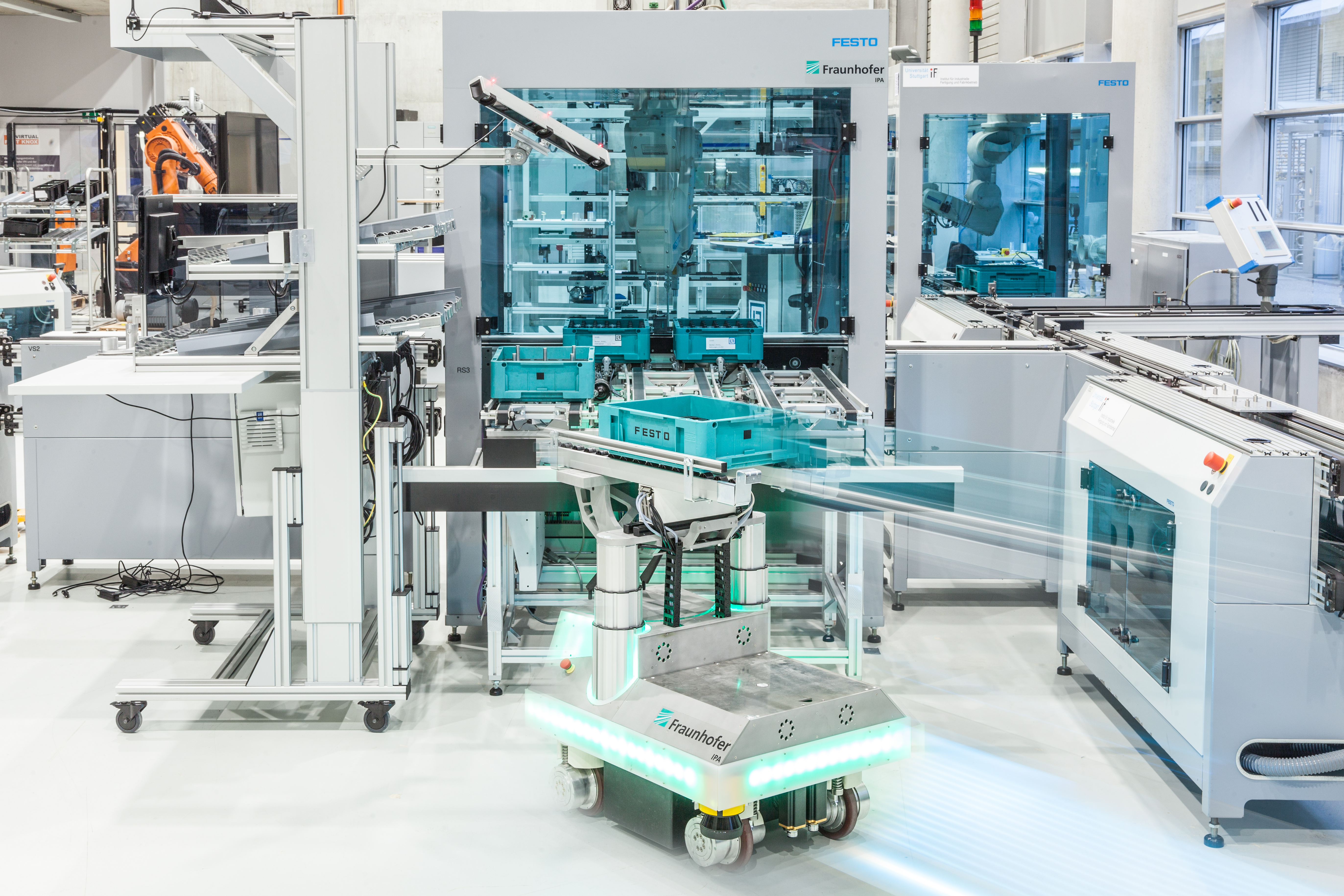
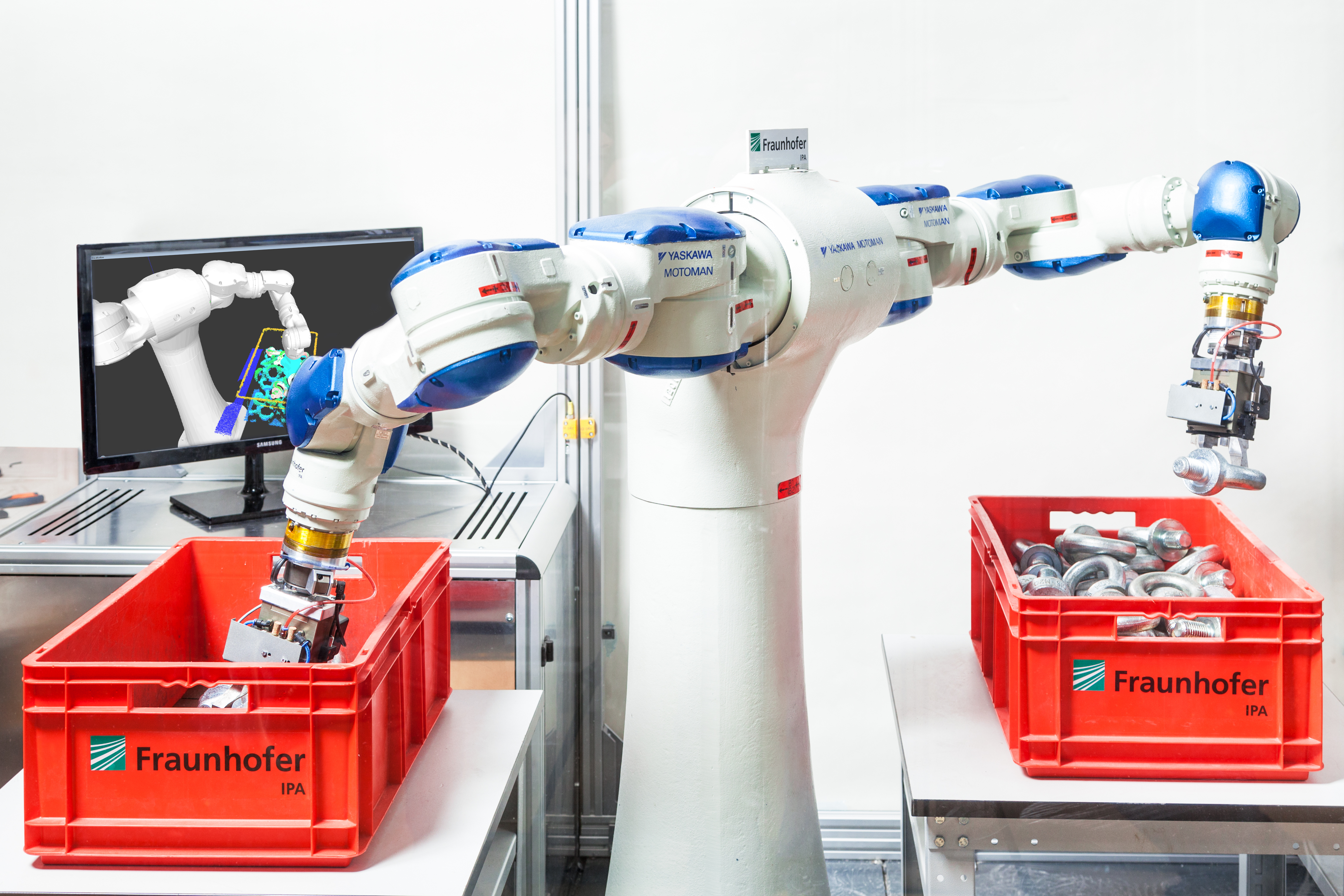
At the Fraunhofer IPA booth No. 421 in Hall A4, the four cornerstones of Industrie 4.0 – production, product, IT and human – can be experienced in different ways within the general context of a digitized industrial world. With the aid of intelligent exhibits interacting with the cloud, visitors can find out which solutions the Stuttgart-based research institute offers for various parts of the industrial value chain.
Material flow simulations more realistic than ever
A separate demonstration area is dedicated to robot navigation. Here, Kai Pfeiffer and his colleagues show how mobile robots are networked with one another via the cloud. They map their environment cooperatively and plan their routes using the virtual image of the production facility (digital shadow). “With the specified safety margin, they bypass any obstacles spontaneously appearing without causing congestion, let alone collisions“, explains Pfeiffer.
If anyone wants to find out what other advantages the cloud navigation of modern Industrie 4.0 architectures has to offer, they need to put on augmented reality glasses. Suddenly, they realize that the actual demonstration area is much bigger than they thought. Virtual robots move around in the areas adjacent to the booth and bypass visitors getting in their way without them even being aware of it. The reason behind this demonstration: using the data merged by the cloud navigation that it acquires via mobile robots and other sensors in the production hall, highly-realistic material flows can be simulated in realtime. Time-consuming and cost-intensive practical trials with robot systems have become a thing of the past.
Machine learning: practice makes perfect
The efficiency of automated handling is constantly improving. This is due to Felix Spenrath and his team, who are continuing to develop the tried-and-tested software bp3™ from Fraunhofer IPA on which the successful bin-picking process is based. “Thanks to better algorithms and new sensor technology, industrial robots are now even able to identify and grip flat, unsorted sheet metal parts“, says Spenrath. The information supplied by modern 3-D sensor systems is thus used to full advantage. The new, intuitive user interface facilitates and speeds up programming so much that investment costs for a handling cell are already amortized after just two years. A two-arm demonstrator at the booth illustrates the latest developments.
With the aid of machine learning, techniques to identify and singularize unsorted objects are constantly being perfected. In the research project “DeepGrasping“, a virtual learning environment is being created. Before being put into operation, robots practice a wide range of grasping tasks in this environment on workpieces which they will need to perform once they have been commissioned. Neuronal networks learn from these simulated gripping tasks, thus continuously improving their process knowledge – based on the motto: “Practice makes perfect“. A presentation at the booth informs visitors about the Deepgrasping project and presents preliminary results.
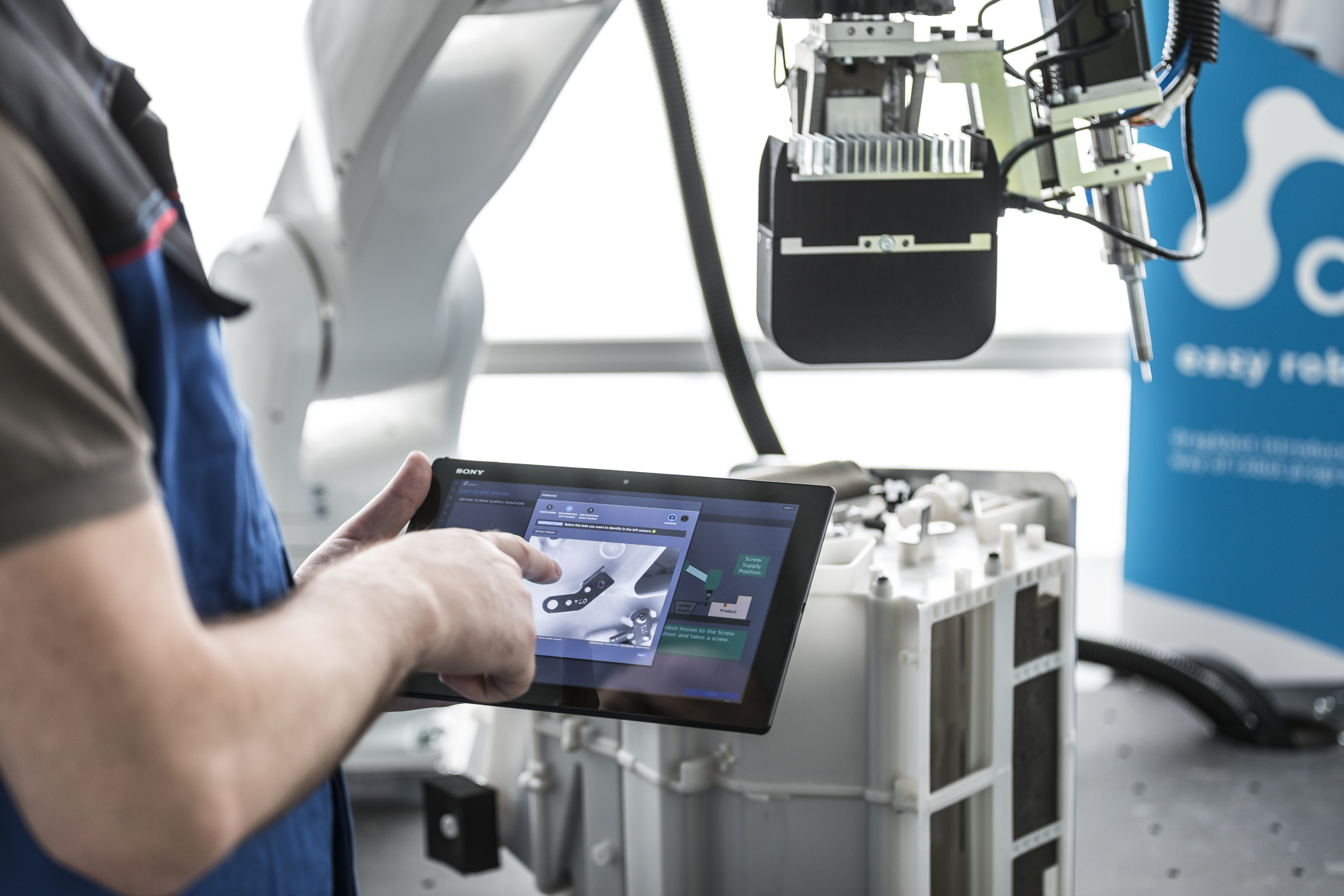
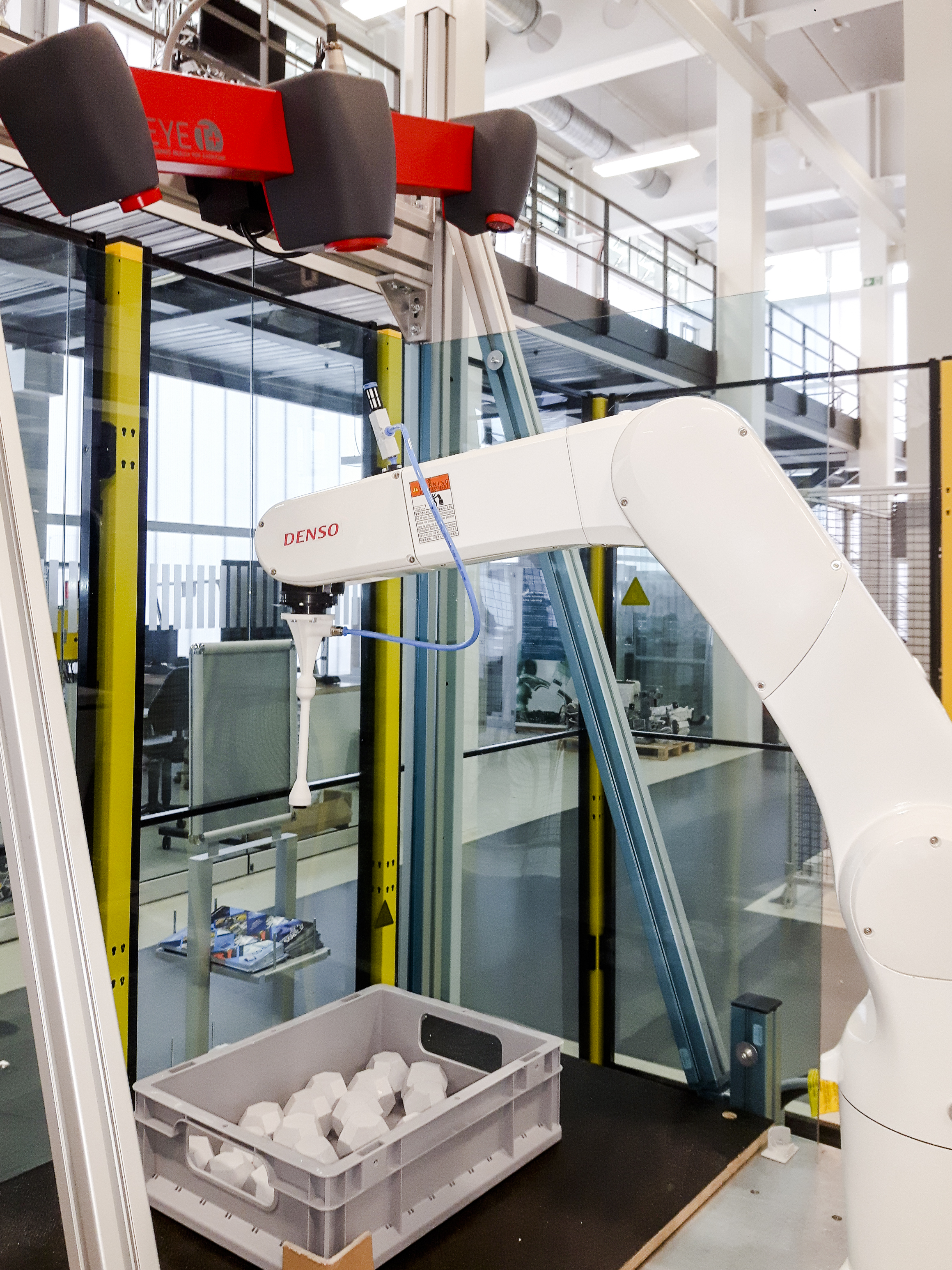
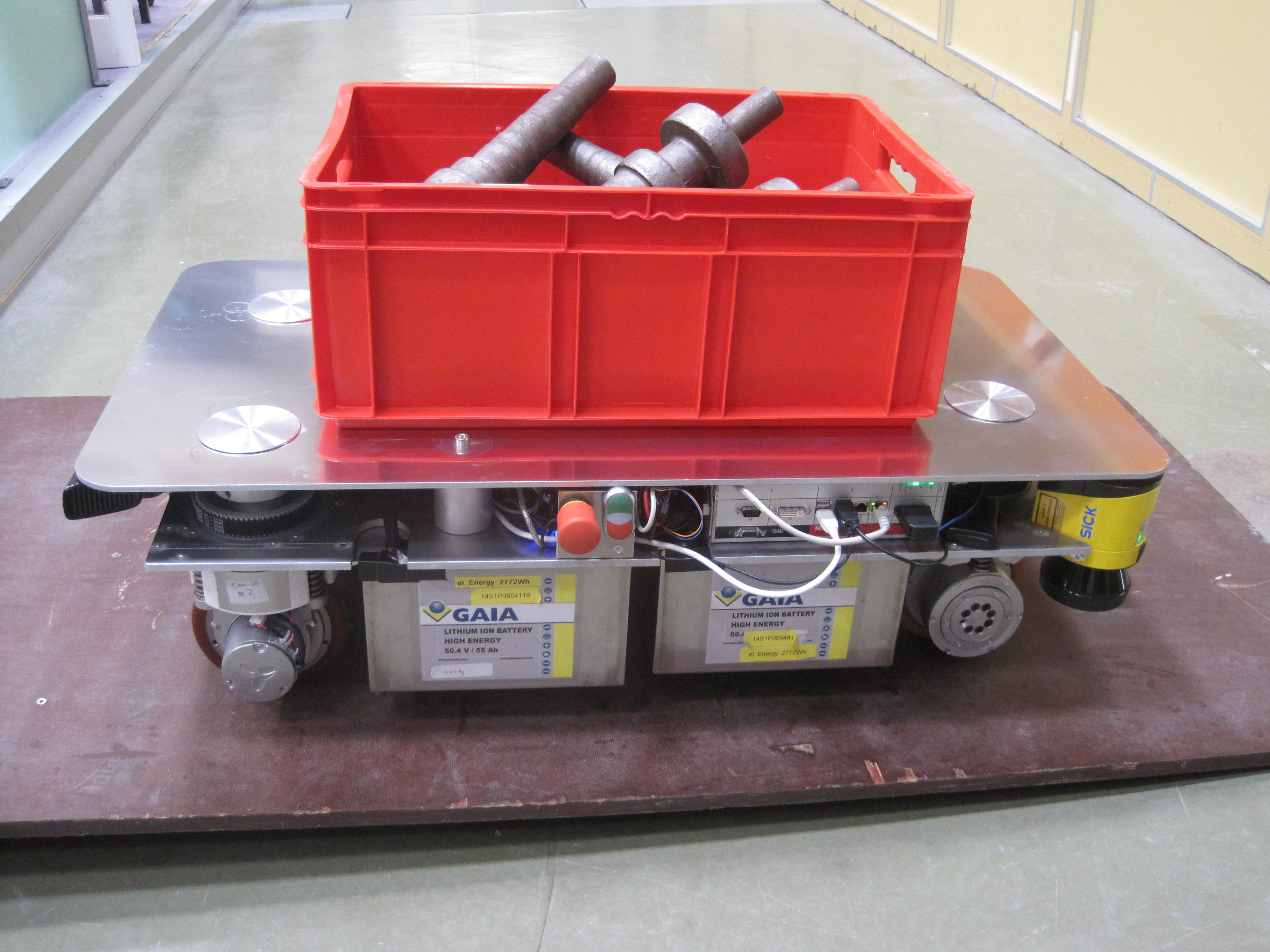
Software drag&bot simplifies robot programming
Currently, robots are hardly ever used in small and medium-sized enterprises. The reason behind this: manufacturer-specific programming languages are so complex that experts must be called in to program a robot for new tasks. »In times of intuitively-operated smartphones and tablets, it is no longer acceptable to have to spend so much time and money on programming robots«, finds Martin Naumann.
Together with his colleagues, the researcher from Fraunhofer IPA has therefore developed the software drag&bot to minimize programming efforts. The trick: drag&bot provides complete programming elements, which can be put together quickly and intuitively via a graphic user interface to create complex robot applications. In addition, user and input aids make it easier to parameterize these elements. Consequently, expert knowledge is no longer needed to reprogram robots from different manufacturers. Naumann will be demonstrating how easy it is to use drag&bot with a robot cell at Automatica 2018. Interested parties visiting the booth can program handling or assembly tasks themselves with just a few clicks.
ROS-Industrial: Open source software suitable for industrial use
Thanks to a reusable software infrastructure, the “Robot Operating System“ (ROS) makes it much easier to develop software, both for robots as well as for robot systems performing complex tasks. “The vendor-neutral standardized interfaces facilitate things. Through ROS, robotics has a common basis – like Linux for computers or Android for smartphones“, explains Mirko Bordignon. End-users and system integrators no longer need to re-develop complex functions from scratch because they are provided by the open source software ROS– particularly when it comes to mobile navigation, planning gripping and robot movements, as well as simulation, machine vision and sensor processing.
Furthermore: ROS saves you money. A growing number of highly-developed software components is freely available. The developers group theirs and other components to create libraries and applications, adding the experience gained from numerous different research and industrial projects in the process. ROS-Industrial is the umbrella initiative, managed in Europe by Fraunhofer IPA, promoting such technology transfer of ROS to the industrial environment. A demonstrator at the booth presents hardware from leading OEMs and performs perception-controlled tasks – all programmed with ROS. Mobile robots and automated guided vehicles can navigate in all directions, pass through bottlenecks without a problem and not waste time maneuvering into position. Currently, these robots are usually fitted with Mecanum wheels or omniwheels. However, when it comes to wheel slip or odometry, as well as the ability to overcome loose ground, steps and thresholds, these undercarriages have their disadvantages. For many years, Fraunhofer IPA has therefore been relying on drive modules with steered standard wheels and will be presenting the third and latest generation at this year’s Automatica. “Since AGVs need to drive under loads to pick them up, they need to be as flat as possible“, emphasizes Theo Jacobs, who has designed the latest drive module. Although the structure above the wheels is extremely flat, it is nevertheless fitted with a top-quality suspension system. With two parallel wheels per module, it has a high power density: If necessary, the full power of the motor can be used to advance it. By controlling the two wheels independently, the module can be turned – thus doing away with the need for an additional steering motor. At the fair, Jacobs will be showcasing the latest drive module version at a test stand which enables endurance tests to be conducted on a range of surfaces with various types of surface irregularity.
Productivity increase of 10 % OEE for complex manufacturing and assembly systems based on self-learning optimization tool
When it comes to capital-intensive manufacturing and assembly systems, companies are forced to keep productivity as high as possible. Otherwise, the threat of cost pressure arises. However, many manufacturing systems cover many stations and work so fast that the human eye is unable to pinpoint the causes of failure. The smart system optimization tool from Felix Mueller and his team provides an innovative approach that has already proven significant productivity increase. The analysis tool identifies errors in interlinked manufacturing systems and automatically points out their cause and propagation in real time. The key technologies are learning algorithms, which have been specially developed to analyze fast and fully automated production lines for discrete goods. To collect data “from the inside”, a high-performance connector is used to access data from the machine controller. In addition, intelligent cameras record relevant process features “from the outside”. A continuous data stream of all sub processes is created and transmitted synchronously to the analysis tool. This serves self learning algorithms to draw conclusions and supply information in the required format. The tool also identifies relationships between errors and prioritizes them. In addition, it is suitable for automated machine benchmarking. This enables the maximum performance to be obtained from all machines in the same or different plants. Real applications in pharmaceutical, consumer goods and automotive production facilities have already stepped up their productivity by up to 15 percent.
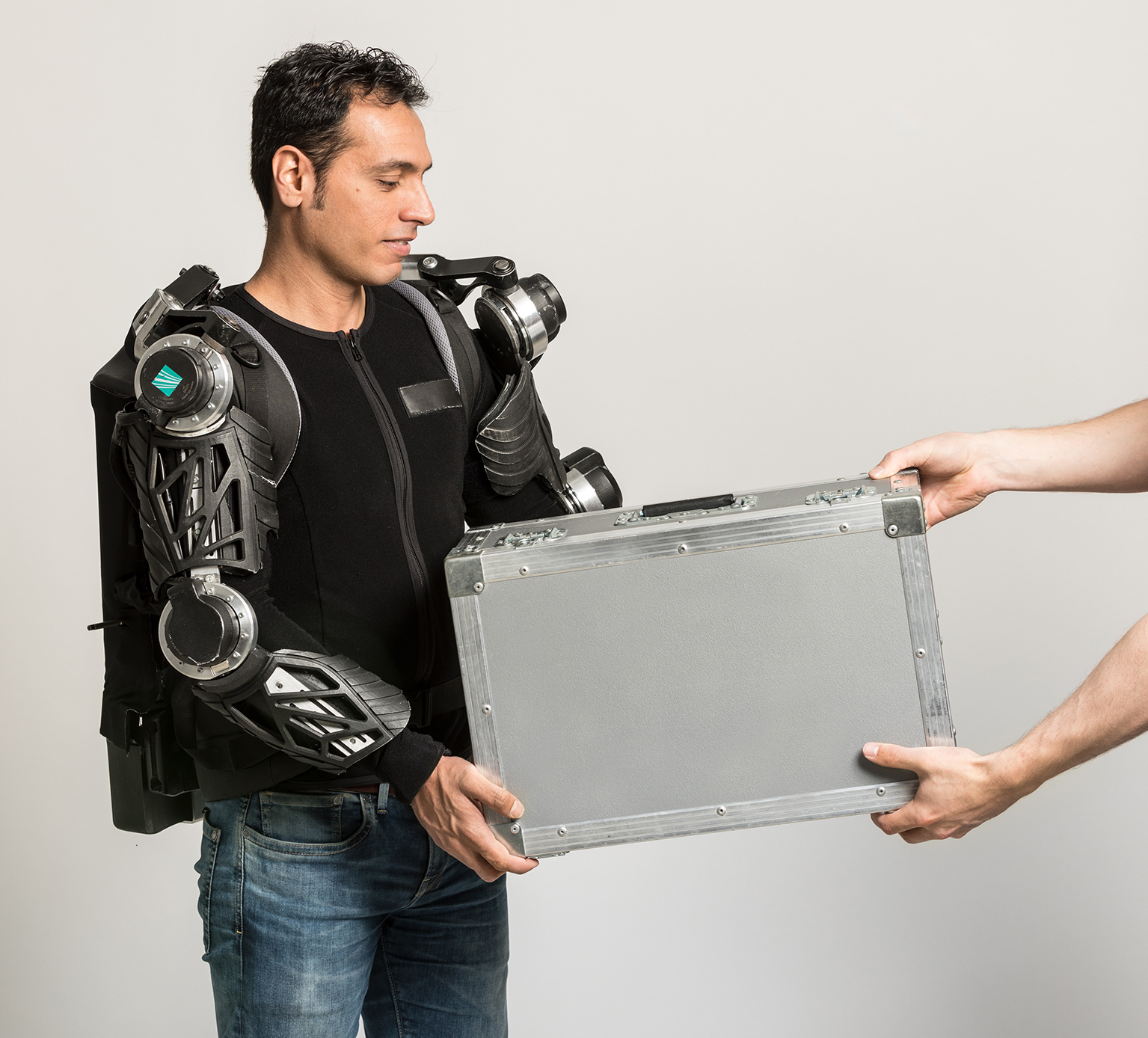
The “e bike to put on“ protects human health
IPA researchers help to relieve physical strain experienced by workers in production facilities. This becomes apparent with the Stuttgart Exo-Jacket, an exoskeleton for the upper body which gives the wearer additional strength without restricting his movements. The experts have integrated drive modules at the elbows and shoulders to support high-torque movements. Thanks to pressure sensors in the arm braces, an impedance control unit ensures that the exoskeleton moves smoothly in line with a person’s movements. An articulated chain with five axes of movement is mounted to the shoulder section. The chain follows all positions of the shoulder joint group. Consequently, the drive element is always in the same position as the shoulder at that moment in time. This enables complex movements in three directions: upwards, downwards and inwards. The jacket is even suitable for overhead assembly tasks.
Since the modules are only active when needed, it is also possible to save energy. In the mid-term, the scientists want to develop a modular kit for different areas of application. To do this, a development and simulation workflow based on motion data will be set up. A detailed musculoskeletal model is used to calculate strain relief. Companies can then create their own solutions to suit the task at hand.
“Virtual Fort Knox“ is no longer alone but still unique
Already back in 2012, Fraunhofer IPA was working with medium-sized enterprises on “Virtual Fort Knox“ (VFK), an open platform offering IT services for manufacturing companies. Since mid-2017, the VFK research platform has been rolled out as a distributed hybrid platform at six further institutes in the Fraunhofer production alliance. It serves as a collaborative research platform for developing innovative manufacturing services, thus forming the basis of an open, realtime-capable operating system for industrial production. Joachim Seidelmann, head of DigiTools at Fraunhofer IPA, explains the declared aim as follows: “We want to implement Industrie 4.0 concepts that will enable users to improve their production processes.“
At Automatica, VFK will be linked to the Festo CP Lab – a miniaturized circular conveyor system, which can be controlled in different ways. Group manager Daniel Stock adds: “We demonstrate how easy it is to connect systems in a flexible manner. In addition, in future enabled by the upcoming 5G technology, for example, we no longer focus only on realtime data fusion but also on control via the cloud in order to offer users completely new possibilities in the future”.
Fraunhofer IPA at AUTOMATICA 2018
Main Fraunhofer IPA booth
Hall A4 | Booth 421
Planned exhibits: cloud navigation, bin-picking, drag&bot software, operating software “Robot Operating System” (ROS), drive modules, smart system optimization, Stuttgart Exo-Jacket, Virtual Fort Knox.
Other booths involving Fraunhofer IPA:
Bin-picking – separating components in a chaotic order
Hall A4 | Booth 101
Fraunhofer IPA has developed the software bp3TM specifically for effective bin-picking. Already in use in over a dozen production facilities, you can see this application in action at Automatica 2018 at the Liebherr automation systems booth.
BakeR – service robot technologies for cleaning robots
Hall B4 | Booth 331
In the research project “Baukastensystem für kosteneffiziente, modulare Reinigungsroboter « (BakeR) (translated: modular system for cost-efficient cleaning robots), service robot technologies for cleaning robots are being further developed to speed up their market readiness. At the booth of the technology program PAiCE (Platforms | Additive Manufacturing | Imaging | Communication | Engineering) sponsored by the Federal Ministry of Economic Affairs and Energy, a cleaning robot that washes floors will be on show. Some of the control software has been developed at Fraunhofer IPA.
Read more: www.baker-projekt.de.
RoboPORT – crowd engineering in service robotics
Hall B4 | Booth 331
In the RoboPORT project, an online development platform for service robotics is currently being created with an extensive library of open source robotics hardware. At the booth of the technology program PAiCE sponsored by the Federal Ministry of Economic Affairs and Energy, prototypes of various robots will be exhibited. These will be developed for RoboPORT at the hackathon THINK.MAKE.START., a collaborative software and hardware development event organized by UnternehmerTUM (the start-up center of the Technical University of Munich), in March 2018.
SeRoNet – platform for the collaborative development of service robot solutions
Hall B4 | Booth 331
In the SeRoNet project, an open IT platform is being created for users and systems providers, as well as robotics and component manufacturers, in the service robotics sector. Users can jointly develop software and offer it to manufacturers, service firms and customers tailored to their individual needs. The platform aims at significantly reducing the efforts required to develop professional service robotics software. Information about the project, as well as about how interested parties can get involved via an open tender in 2019, can be obtained from the booth of the technology program PAiCE sponsored by the Federal Ministry of Economic Affairs and Energy.